
Erikalinpayne
October 17, 2023
2
Min Read Time

Modular design for yearbooks is an approach to layout and design that emphasizes flexibility (just like your favorite yearbook company) and ease of content organization. Small, self-contained modules include photos, copy, and other theme content. With multiple reader entry points, a modular layout contains three or more, each telling a different story.
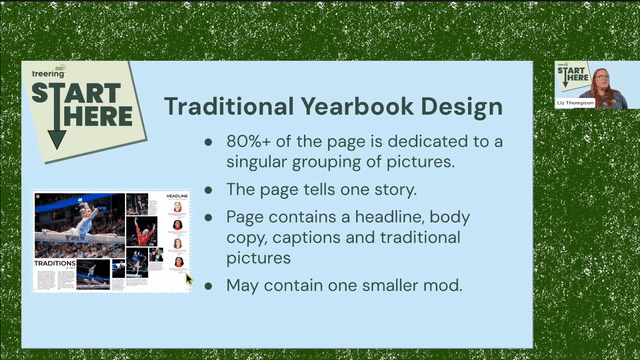
Learn the difference between traditional and modular design.
Because modular design has many interpretations and applications, we pulled together four different looks.
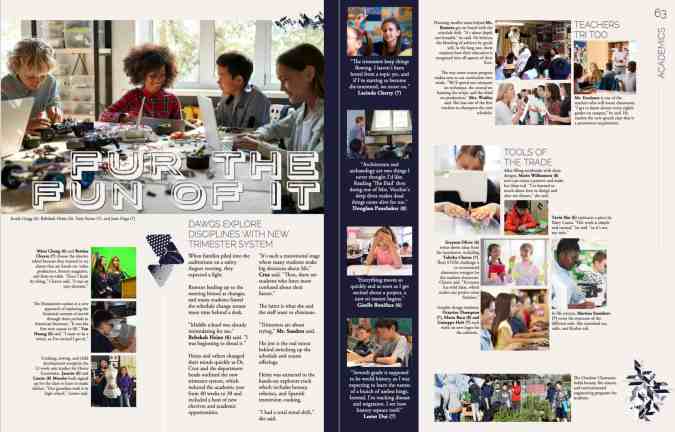
This spread covers the middle school schedule, media program, study habits, and electives in six modules. There is a large amount of copy beyond the feature story and a quote "sidebar" running down the middle of the spread.
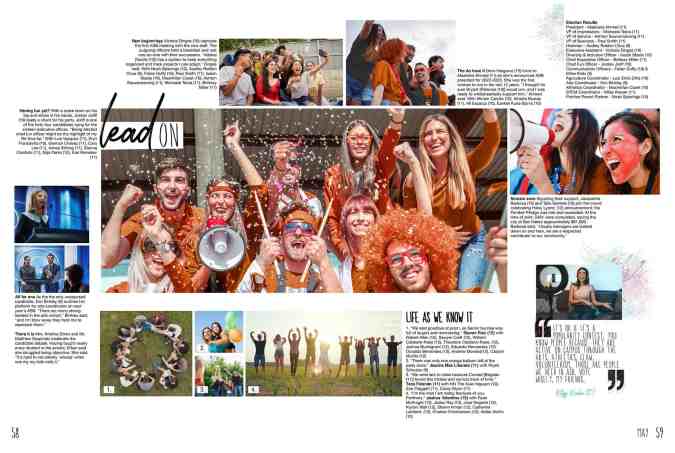
This varied collection of mods includes a quote package, personality profile, election results, and event coverage. In a chronological yearbook, such as this, modular layouts help organize myriad stories on a single spread.
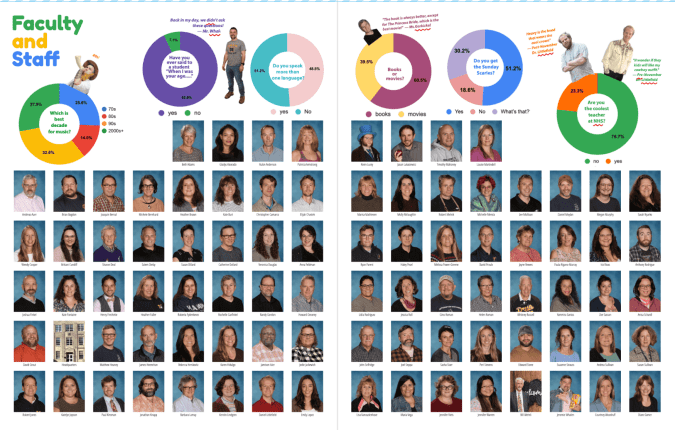
Not only did the six polls reveal more about the faculty, but the yearbook editors added quotes and cutouts to teach us more. Adding a mod to the people or reference section is one way to add voices to an otherwise flat section.
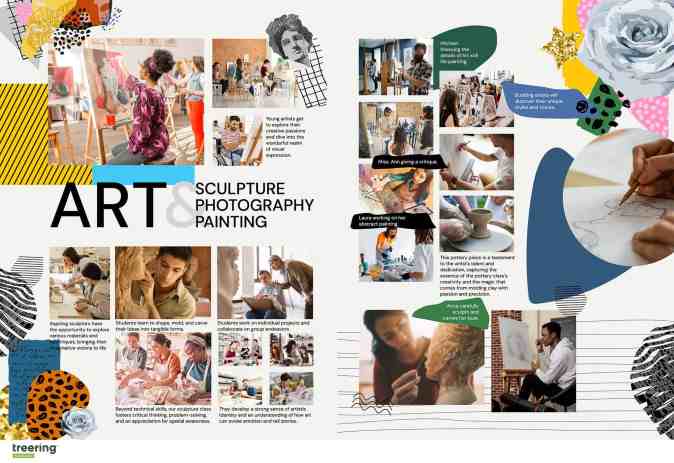
Low on copy, high on images, this sample spread with four modules provides ample space to detail aspects of art creation. As-is, this layout is available with the others in the Maximalist theme under layout and design for Treering Yearbooks editors. Other modular themes include Tropical Chronicles and Tied Together.
Treering Yearbooks' built-in tools to help you create your own layouts and modify ours in a few clicks.
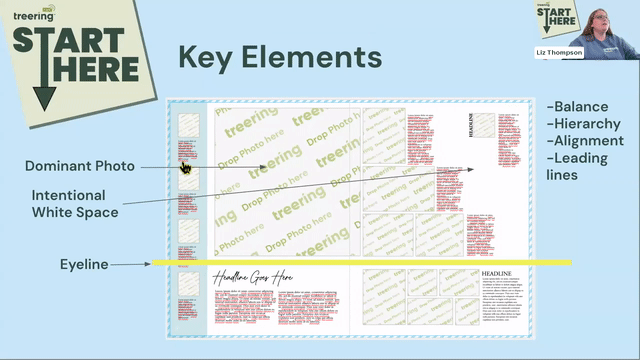
Treering design school in under 18 minutes.
While modular design increases coverage opportunities, it takes more planning from your editorial team.
Devoting a spread to one topic limits the coverage to one group. Opening up a sidebar or two increases your possibilities to tell more of the year.
On larger teams, modular design facilitates collaboration among a team of yearbook contributors. Section editors can distribute interview and photography assignments by topic.
A quick note for advisers: assigning module topics is also a way to combat the “I have nothing to do” line that tends to get tossed around the newsroom.
Recurring modules maintain a consistent look and feel throughout the yearbook, which strengthens the theme and overall design.
Frankly, some content may not neatly fit into modular structures. It’s fetch. And if not managed carefully, modular design may lead to overusing the same design elements. There’s a fine line between consistency and monotony.
The most popular yearbook mods tend to be sidebars with a question-and-answer format. If you want to add something new to your yearbook layouts this year, this is one way to increase coverage and develop open-ended questions.
Consider building in these additional modules:
This blog is adapted from Liz Thompson’s Design 201 session from TRL 23: Start Here. Thompson, a former high school yearbook adviser, serves as a customer success manager with Treering Yearbooks.